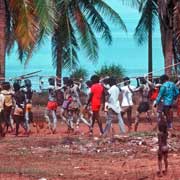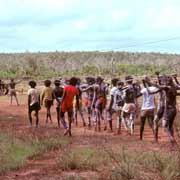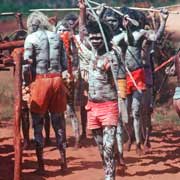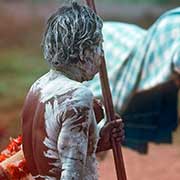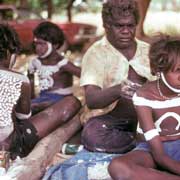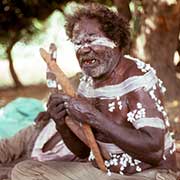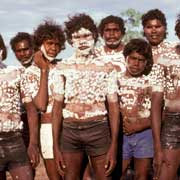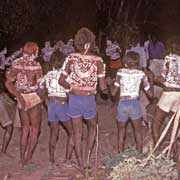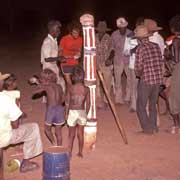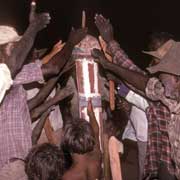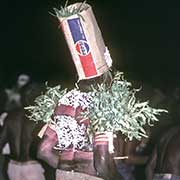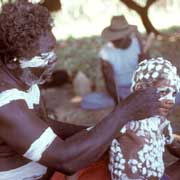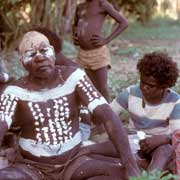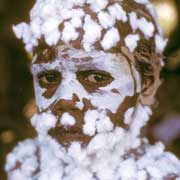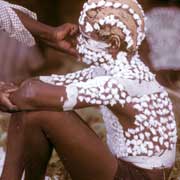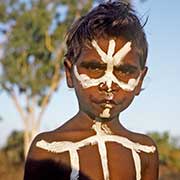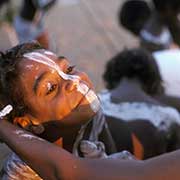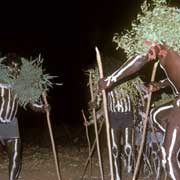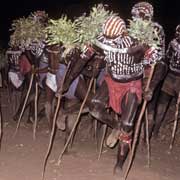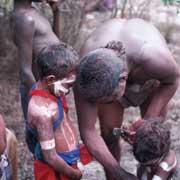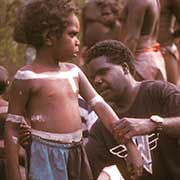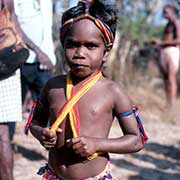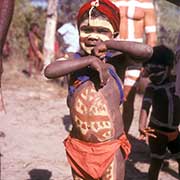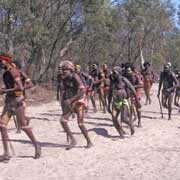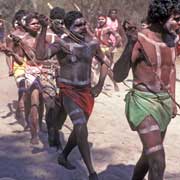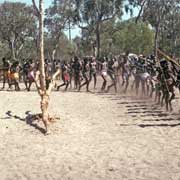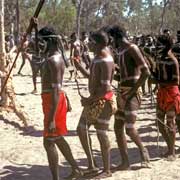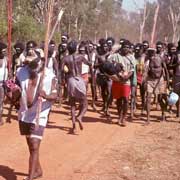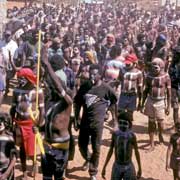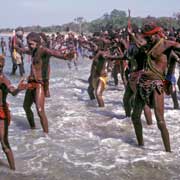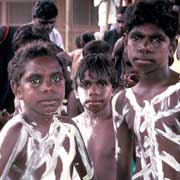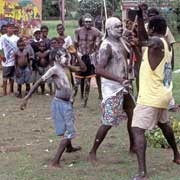Photos of Aboriginal Ceremonies from Northern Australia
Aboriginal Ceremonies from Northern Australia
you may then send it as a postcard if you wish.
Funerals are very important in the lives of the people of Arnhem Land and involve ceremonies where ritual dances take place; people are painted with white clay as a sign of mourning and men perform ceremonies, brandishing spears, as among the Djambarrpuyngu speaking Yolngu people of Galiwin'ku (Elcho Island). Mourning may take several weeks. In the old days bodies were laid on raised platforms, the bones later collected and placed in log coffins; nowadays Christian burials are carried out, but traditional ceremonies are still performed as well.
The Yanyuwa people, living in and around the town of Borroloola near the southern shores of the Gulf of Carpentaria, are made up of four clan groups in two moieties. The Yalkawaru ceremony, associated with "Ngabaya" (Plains Kangaroo) Dreaming is owned and performed by members of the Wurdaliya and Wuyaliya clans while the Kulyukulyu ceremony, representing the Dreaming of the Brolga, is owned and performed by the Mambaliya/Wawukarriya and Rrumburriya clans. In both ceremonies men and boys are painted with designs in white and decorated with tufts of cottonwool, nowadays glued onto the body with sugar water. The "kujika" or song cycle, describing the travels and deeds of the Dreaming being is sung and danced over a number of days. During the Yalkawaru ceremony, paperbark headdresses are worn and the ceremony finishes around a decorated pole, representing the deceased. The Yalkawaru ceremony involves young men and boys personifying the mythical Brolga, their heads plastered with clay and cotton wool.
The "Mardayin" ceremony is performed all over Arnhem Land and, when performed, attracts men from far afield; they re-enact the myths in a festival that takes place over a number of weeks. In Numbulwar, an Aboriginal community on the eastern shore of the Gulf of Carpentaria, the ceremony is known as "Ngarrag". Here too the community is made up of two moieties, called Dua (or Dhuwa) and Yirritja; during the ceremonial cycle rituals are conducted during late afternoon. Actors of the Dua moiety perform first, followed by the Yirritja men. Men are painted with designs representing their "Dreaming" or clan association. There are many different rituals, some taking place on a secret ceremonial ground, only to be seen by men; others may be seen by all. The ceremony culminates in ritual bathing, in which everybody, men, women and children, go to the beach and immerse themselves, dancing in the sea and washing off the ochre and clay with which they were ritually painted; this way the actors, men and women, re-enacting the deeds of the Dreamtime beings in the mythical past, leave the designs sung and painted on their bodies behind and re-emerge from the water as people again.
The traditional Míddjarn ceremonial dance of the Ndjébbana people is carried out by men and boys in the school grounds at Maningrida Aboriginal community on the north coast of Arnhem Land in the Northern Territory. It is a serious ceremony, but also fun for the children to participate in. Everyone is welcome to attend this ceremony.



